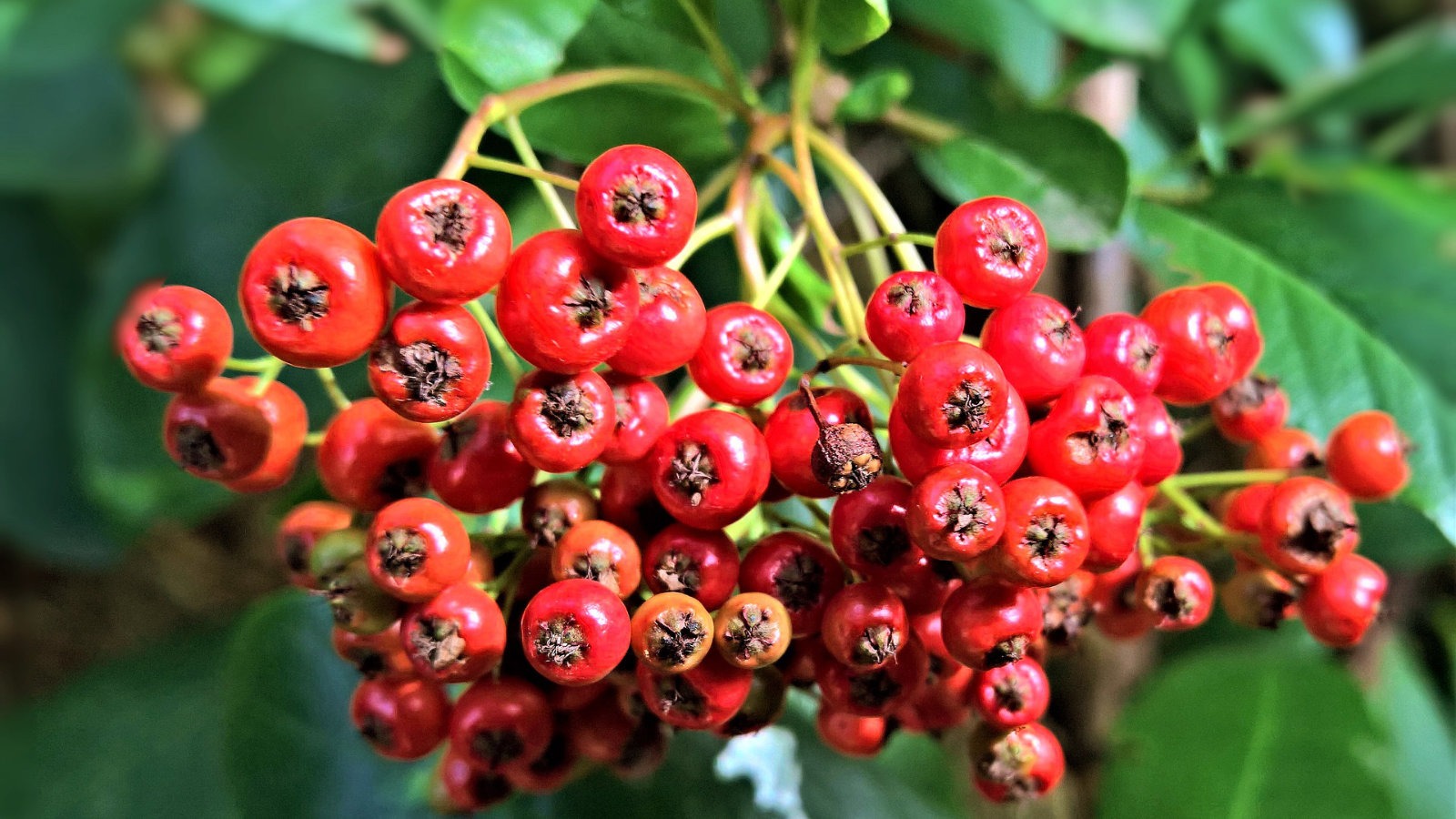The rowan tree or mountain ash as it is also called is a fairly common tree in gardens and parks and is native to the UK. With increasingly cold winters this may be a good tree to consider as it survives well in the winter months and lives at an altitude of up to 1000 metres in the highlands of Scotland. Rowan is a deciduous tree making it easier to identify from April when the new leaves start appearing. It has long, thin, pointed; green leaves which are similar in look to ash leaves. They are toothed and about 20cm long with 11 – 15 of them appearing to each stem. In May and June the tree produces small white flowers in clusters (corymbs). Let’s not also forget the bright red berries that appear in August and September which most of you will recognise the rowan tree by. It can grow up to 15 metres tall over a span of 40 years and the bark is a greyish colour.
Latin name: Sorbus aucuparia
Overview
The rowan trees survival tactics are in the berries they produce. These start as the white flowers found spring. The scent of these flowers attracts pollinating insects which fertilise the flowers. These fertilised ones will then go onto turning into the red berries found in late summer and early autumn. These berries then attract birds which will hungrily devour them and swallow the seeds inside. These seeds are carried to new destinations through the mobility of the birds, and dispersed through their droppings helping to ensure the survival of the species. The red berries can also be eaten by humans but they are a bitter taste, and I don’t think we can claim the bird’s credit for dispersion of the seeds.
In the garden
The rowan tree is a slow growing tree and can be pruned making it accessible for small and large gardens. It’s also great for attracting native wildlife. As well as attracting bees, flies, and beetles for pollination the berries will also attract birds to the garden, many similar to the holly tree. Blackbirds (Turdus merula), fieldfares (Turdus pilaris), redwings (Turdus iliacus), mistle thrush (Turdus viscivorus), waxwings (Bombycilla garrulous), chaffinches (Fringilla coelebs) and siskins (Carduelis spinus) will all eat the berries. The welsh wave moth (Venusia cambrica) also eats the leaves and the larva of the apple fruit moth (Argyresthia conjugella) can be found on the berries. It is also a good tree for lichens and fungi.
Did you know?
- The rowan tree is a very tough hard wood and as such is used for handles of gardens tools. Traditionally the tree has also been known to protect against witchcraft so look for a rowan tree if you ever encounter one!
